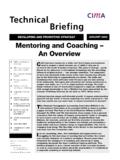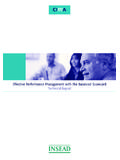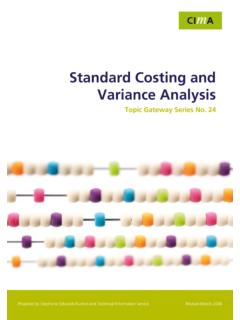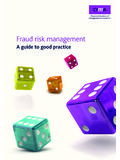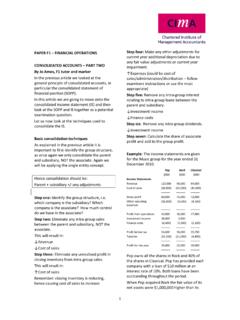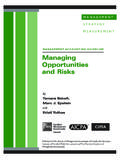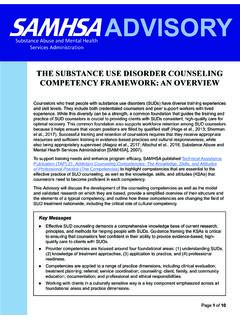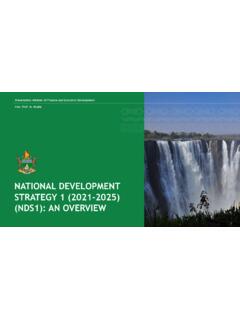Transcription of Activity-Based Management - An Overview (Technical …
1 Activity-Based Management and Activity-Based costing (ABM/ABC)have brought about radical change in cost Management has grown largely out of the work of the Texas-basedConsortium for Advanced Manufacturing-International (CAM-I). Nolonger is ABM s applicability limited to manufacturing principles and philosophies of Activity-Based thinking applyequally to service companies, government agencies and processindustries. The acronym itself has evolved from ABC to ABCM (activ-ity- based cost Management ) to ABM, and the application of ABCevolved from a manufacturing product costing orientation to a man-agement philosophy of activity Management applied in industries andorganisations other than manufacturing. Activity-Based costing and Activity-Based Management have beenaround for more than fifteen years. Most forward-thinking compa-nies have implemented them, or are in the process of doing so. ABC is not a method of costing, but a technique for managing theorganisation better.
2 It is a one-off exercise which measures thecost and performance of activities, resources and the objects whichconsume them in order to generate more accurate and meaningfulinformation for decision-making. ABM draws on ABC to provide Management reporting and decision supports business excellence by providing information tofacilitate long-term strategic decisions about such things asproduct mix and sourcing. It allows product designers to understandthe impact of different designs on cost and flexibility and then tomodify their designs accordingly. ABM also supports the quest forcontinuous improvement by allowing Management to gain new insightsinto activity performance by focusing attention on the sources ofdemand for activities and by permitting Management to create behav-ioural incentives to improve one or more aspects of the AND PROMOTING STRATEGYAPRIL 2001 Activity-Based Management An Overview IN THIS 1 General FAQs Part 2 Practical guidance on implementing ABMPart 3 ChecklistPart 4 Further reading and bibliographyFor further information please contact:Technical Services:Tel: +44 (0)20 7917 9237 Fax: +44 (0)20 7580 TechnicalBriefingThe Chartered Institute of Management Accountants 63 Portland PlaceLondon W1B 1 ABTel: +44 (0)20 7637 2311 Fax.
3 +44 (0)20 7631 BRIEFINGACTIVITY- based Management AN OVERVIEW2 ABM is a fundamental shift in emphasis fromtraditional costing and performance undertake activities which consumeresources so controlling activities allows you tocontrol costs at their source. The real value and power of ABM comes from theknowledge and information that leads to betterdecisions and the leverage it provides to measureimprovement. ABM enables Management to make informed decisions about lines of business, product mix,process and product design, what services shouldbe offered, capital investments, and pricing. ABM is more than an accounting tool; it's a systemfor continuous improvements. It is not a singleanswer but merely one of the many tools that canbe used to enhance organisational performancemanagement. ABM will not reduce costs, it will only help youunderstand costs better to know what to correct. The process of ABM does consume resources, andthe manpower costs can be significant.
4 Companies considering or already implementingABM should realise that although certain productor market factors might make it potentially beneficial, those same factors might not lead to asuccessful implementation. ABM gives us a muchbetter chance of establishing a useful costing foroutputs. But there is a price to pay. It can be diffi-cult to find out what costs apply in a particularactivity, and those involved may be suspicious ofothers charged with finding out. Some areas ofactivity overlap and are difficult to separate. And,of course, ABM is a costly exercise in its own right. Other priorities, top Management commitment, IT capabilities, and integration with financial andbudgeting systems should be considered beforeimplementation. Organisations have begun to look at ABM for avariety of reasons. Among the most commonlycited are: top-down pressure to reduce costs; competitive pressure/market conditions; organisation-wide programme; the introduction of benchmarking; regulatory issues; seeking world-class status through process Management .
5 ABC and ABM are a continuum of value. ABM isthe application of ABC data to manage productportfolios and business processes better. Part 1 General FAQsWhy have organisations turned to Activity-Based techniques? Management practices and methods have changed overthe last decade and will continue to change. Organisations are moving from managing vertically tomanaging horizontally. It is a move from a function orientation to a process orientation. Total quality man-agement (TQM), just-in-time (JIT), benchmarking andbusiness process reengineering (BPR) are all examples ofhorizontal Management improvement initiatives. Theseinitiatives are designed to improve an organisation'swork processes and activities to effectively and efficientlymeet or exceed changing customer requirements. Management information systems to track and provideinformation about the horizontal aspects of a businesshave lagged significantly behind the needs of its costing/ Activity-Based Management fillsthis information need by providing cost and operatinginformation that mirrors the horizontal view.
6 The focus of ABC is on accurate information about the true cost ofproducts, services, processes, activities, distribution channels, customer segments, contracts, and Management makes this cost and operat-ing information useful by providing value analysis, costdrivers, and performance measures to initiate, drive orsupport improvement efforts and to improve decision-making. What is the difference between Activity-Based costing andactivity- based Management ?ABC has been around for some time. It has promisedcompanies a new way to understand costs and a newway to limit these costs to the products and customersdriving them. It has been heralded as the cost accountingmodel that would help Management improve profitabil-ity. And it is fair to say that it does do that gains a thorough understanding of itsbusiness processes and cost behaviour during theABC analysis process; applies the insights gained during ABCfact gathering and analysis to improve decision mak-ing at both operating and strategic levels.
7 This is theessence of ABM. Put simply ABM is ABC in BRIEFINGACTIVITY- based Management AN OVERVIEW3 Placed at the top of the process- based organisation arethe needs and requirements of customers. Every com-pany exists to meet these needs and requirements, this isshown at the top of the model. Processes and activitiesare represented in the middle of the model. At the bottom of the model are the measures of organisationalperformance. Processes and activities are the central nervous system of the process- based organisation andrepresent the core of what the organisation does to createvalue for its customers and shareholders. How well theorganisation competes at the activity and process levelwill ultimately determine its survival. Performance ofactivities is the cornerstone and common denominator of improvement initiatives. Management must focus onthe process/horizontal view of their organisations toremain competitive.
8 Activities represent the horizontalview. Activity-Based Management is a tool developed tosupport the process- based organisation by providinginformation and data needed to plan, manage, control,and direct the activities of a business to improveprocesses, products and services, to eliminate waste andto executive business operations and strategies. Thisinformation takes the form of the outputs of an ABMinformation are the outputs of an ABM information system?Organisations that are designing and implementing ABMwill find there are five basic information outputs: the cost of activities and business processes; the cost of non-value-added activities; Activity-Based performance measures; accurate product/service cost (cost objects); cost prompts managers to ask the right questions. ABCbecomes ABM ( Management ) when it is used to: design products and services that meet or exceed customers' expectations and can be produced anddelivered at a profit; signal where either continuous or discontinuous (re-engineering) improvements in quality, efficiencyand speed are needed; guide product mix and investment decisions; choose among alternative suppliers; negotiate about price, product features, quality, delivery and service with customers; employ efficient and effective distribution and serviceprocesses to target market and customer segments; improve the value of an organisation s products are the basics of ABC?
9 Activities are the common denominator of the horizontal, processed- based view of the horizontal view of the organisationSource: Implementing Activity-Based Management in Daily Operations, John A Miller, 1996, Inc, p. 2, Exhibit 1-1. John Wiley & Sons. This material is used by permission of John Wiley & Sons, BRIEFINGACTIVITY- based Management AN OVERVIEW4 The cost of activities and business processesSince activities form the very core of what a businessdoes, the basic output of the ABM system must be to provide relevant cost information about what a businessdoes. Instead of reporting what money is spent for andby whom, costs are assigned to cost of non-value-added activitiesSome activities add value to a product or service, whilesome do not. A non-value added activity is an activitythat is considered not to contribute to customer value orto the organisation's need. This is defined as of waste is valuable to Management .
10 Thiscrucial information output provides a focal point forimprovement performance measuresIn addition to cost information for business processes andactivities, the ABM system must report information anddata on activity performance. Knowing the total cost ofactivity is insufficient to measure activity measures of quality, cycle time, productivity andcustomer service may also be required to judge activityperformance. Measuring the performance of activitiesprovides a scorecard to report how well improvementefforts are working and is an integral port of product/service cost (cost objects)Products and services are provided to markets and customers through various distribution channels or contractual relationships. Because products and servicesconsume resources at different rates and require differentlevels of support, costs must be accurately product and service cost information is vital forselecting the individual and segmented markets wherean organisation competes and for pricing in those mar-kets.

